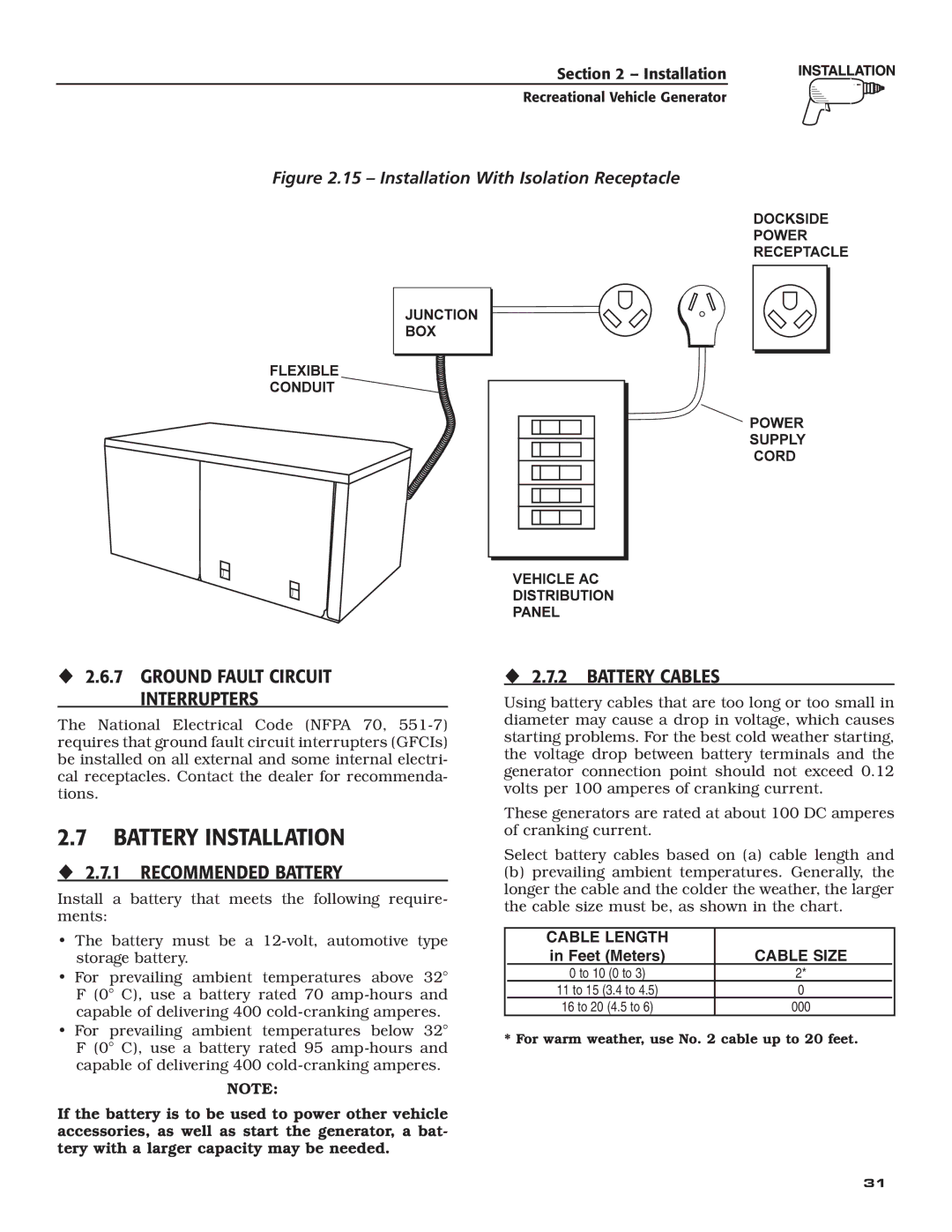
Section 2 – Installation
Recreational Vehicle Generator
Figure 2.15 – Installation With Isolation Receptacle
2.6.7 GROUND FAULT CIRCUIT INTERRUPTERS
The National Electrical Code (NFPA 70,
2.7 BATTERY INSTALLATION
2.7.1 RECOMMENDED BATTERY
Install a battery that meets the following require- ments:
•The battery must be a
•For prevailing ambient temperatures above 32° F (0° C), use a battery rated 70
•For prevailing ambient temperatures below 32° F (0° C), use a battery rated 95
NOTE:
2.7.2 BATTERY CABLES
Using battery cables that are too long or too small in diameter may cause a drop in voltage, which causes starting problems. For the best cold weather starting, the voltage drop between battery terminals and the generator connection point should not exceed 0.12 volts per 100 amperes of cranking current.
These generators are rated at about 100 DC amperes of cranking current.
Select battery cables based on (a) cable length and
(b)prevailing ambient temperatures. Generally, the longer the cable and the colder the weather, the larger the cable size must be, as shown in the chart.
| CABLE LENGTH |
|
|
| in Feet (Meters) | CABLE SIZE |
|
| 0 to 10 (0 to 3) | 2* |
|
| 11 to 15 (3.4 to 4.5) | 0 |
|
| 16 to 20 (4.5 to 6) | 000 |
|
* For warm weather, use No. 2 cable up to 20 feet.
If the battery is to be used to power other vehicle accessories, as well as start the generator, a bat- tery with a larger capacity may be needed.
31
